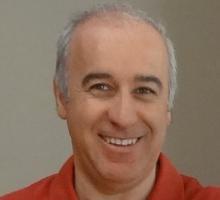UFRG – Unidirectional fibre reinforced grout as strengthening material for reinforced concrete structures
- Citation:
- UFRG – Unidirectional fibre reinforced grout as strengthening material for reinforced concrete structures, Gião, R., Lúcio V., Chastre C., and Bras A. , BEFIB2012 – Fibre reinforced concrete, Guimarães, (2012) copy at https://docentes.fct.unl.pt/cmcr/publications/ufrg-unidirectional-fibre-reinforced-grout-strengthening-material-reinforced-concr
Abstract:
The present study is part of an extensive research project, where the main objective is to evaluate a strengthening solution for reinforced concrete structures using a small thickness jacketing in the compression side of the RC element with unidirectional fiber reinforced grout - UFRG.
For this purpose a high performance cementitious grout reinforced with continuous and unidirectional non woven fibermat has been developed. It was expected that the use of these type of fibers allowed an optimization of its percentage and orientation. It was expected that the use of these type of fibers allowed an optimization of its percentage and orientation. Besides, for continuous fibers (with an aspect ratio, defined as the length-to-diameter ratio, l/d=∞), the composite should attain higher tensile strength since the fiber embedment length is enough to prevent fiber pullout.
The experimental campaign included a set of preliminary tests that allowed the design of the fiber reinforced grout, sustained with rheological parameters [7] and mechanical characterization tests of the materials.
Finally, an experimental campaign was carried out in order to proceed to the mechanical characterization of the unidirectional fiber reinforced grout. Compressive tests were conducted in small thickness tubular specimens that enable the determination of the compressive strength and the static modulus of elasticity of the material. The tensile strength of the material was obtained using splitting tests of cubic specimens (according the standard DIN 1048-5). The experimental results are presented and analyzed.
Notes:
n/a
